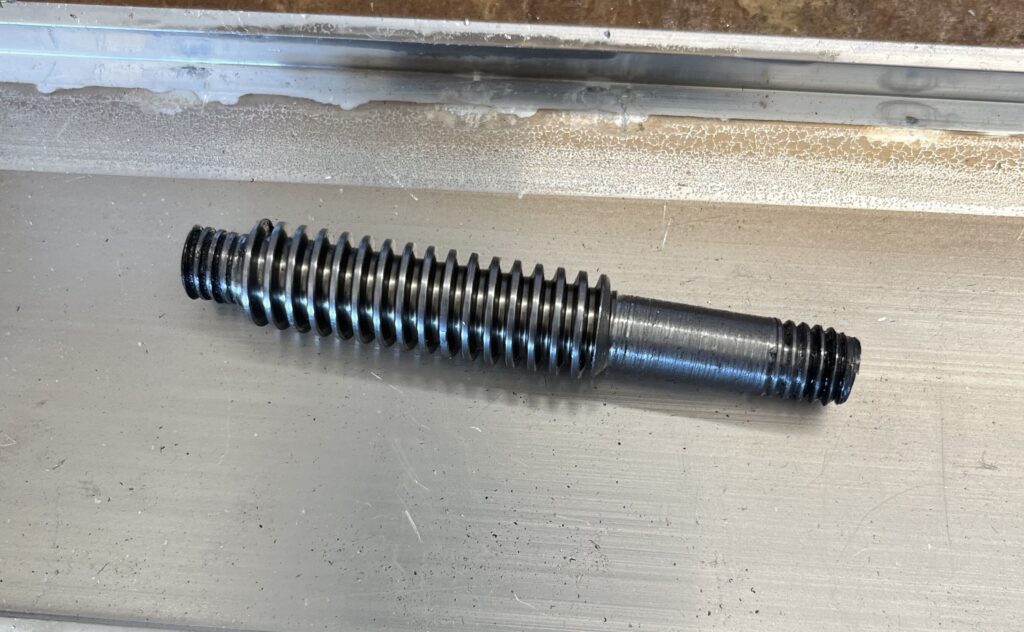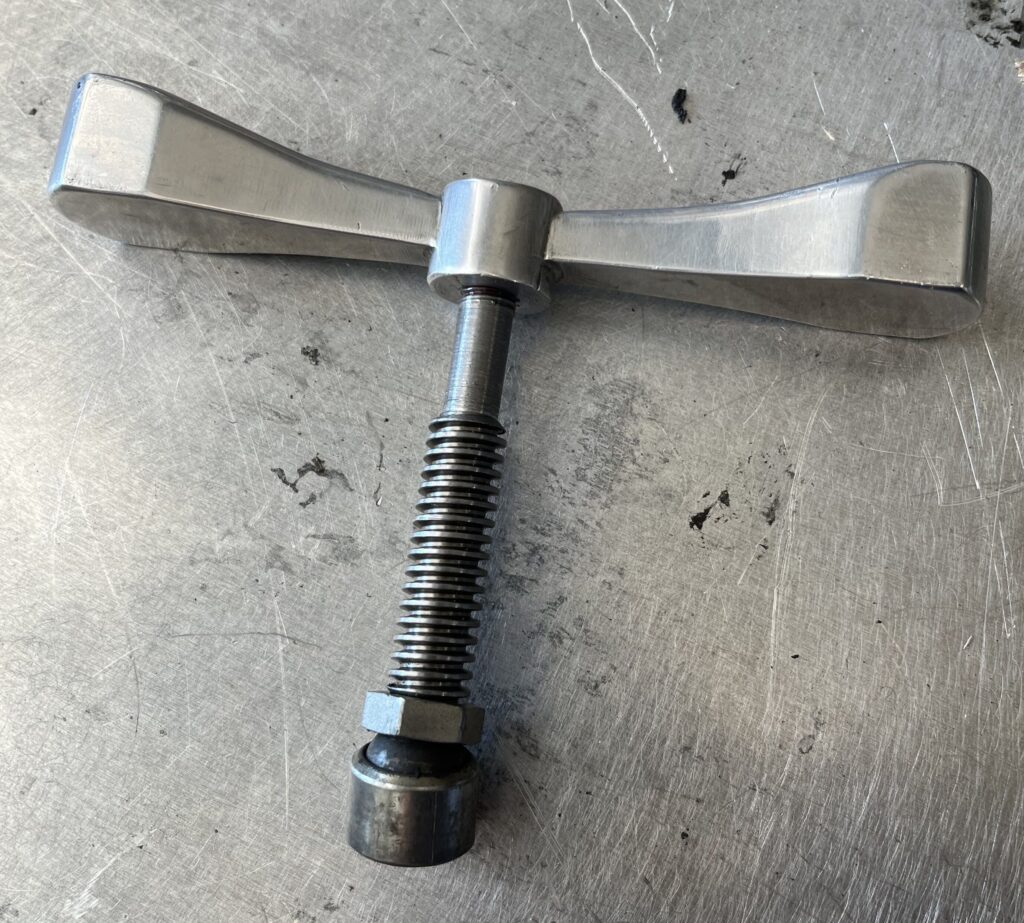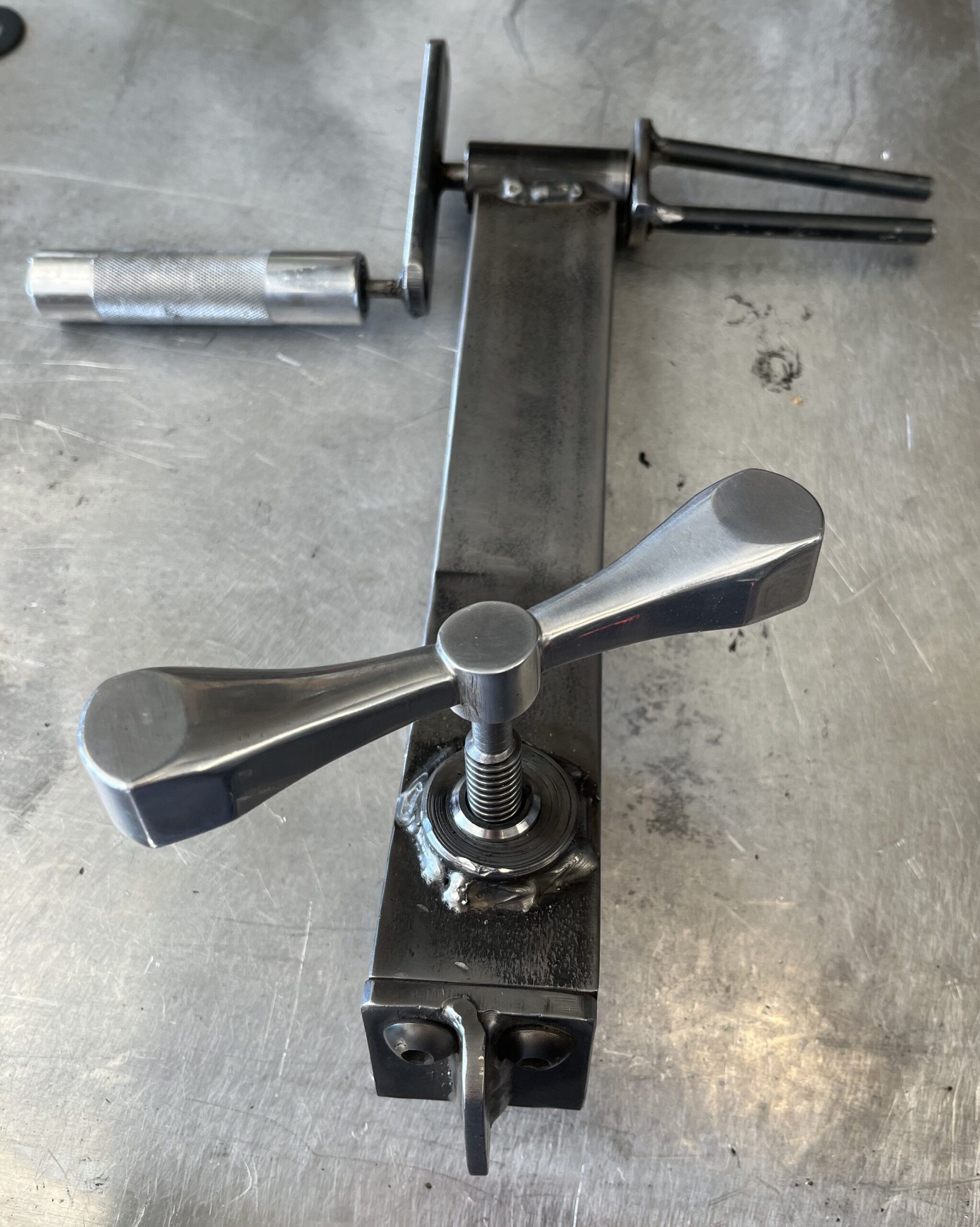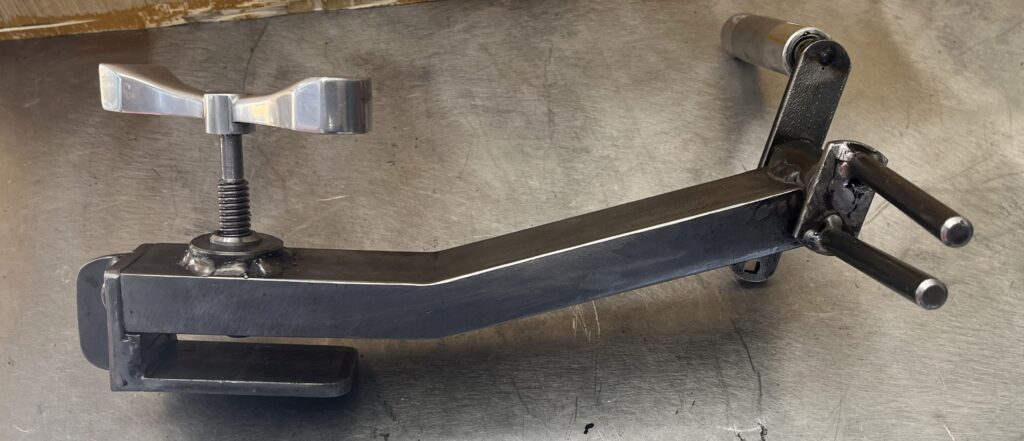My neighbor, who has become a good friend over the years, currently works as a truck driver. One of the things he has to do several times a day is to wind up the 4″ wide straps used to hold down loads on the flat beds. The winder that the company supplies is pretty basic.

These are super cheap, they have a lot of play in the winding mechanism, the handle wears out the palms of your gloves, they clamping mechanism is weak, and there is a lot of flex in the unit overall. I figured I could do better. We discussed some options – there are some units out there that are powered by cordless drills, but we decided to go fully manual too keep from having to drag around a drill, battery, and charger.
I did the initial part of this a few years ago, and it has been updated since. I don’t have any initial build photos, so I’ll describe what I did. Here is what I ended up with.

For the frame, I used 3″x1″x3/16″ steel channel. Aluminum would have been better, but I don’t have a welder that will handle that, so steel is what I used. I cut a kerf in the side of the channel, put a bend in it with the hydraulic press, then welded the gap solid. I welded a piece of 1″ tubing to the end and pressed in some R4-ZZ bearings in the ends to give a no-play spin to the shaft. The handle is a piece of 1″ aluminum bar with a 3/8″ hole drilled through the center, knurled, and counter bored for another pair of R4-ZZ bearings.
The shaft for both the handle and the winder are 1/4″ rod, milled square on the ends, so they can fit into a square hole in both the winder bar and the roll-up bar. They were then drilled and tapped 6-32, and mounted in place. The idea was that he could switch the handle to provide more leverage.
The end that clamps to the flatbed is a piece of 1/4″ x 3″ flat bar bent to form an L and bolted in place to the end. The clamping mechanism is a piece of 3/8-16 grade 5 all thread with a swivel base (hidden in photo) and a knurled aluminum handle for clamping.
Over the next several weeks I had to make several changes to fix problems. First, the attachment between the 1/4″ rod and the flat bar were not durable enough and needed to be replaced with welds. Next, the clamping anvil had too much flex in it. I replaced the bent steel with a reinforced welded piece that was much stiffer. Lastly, the handle wasn’t durable enough, so I milled out a new aluminum handle, and he did the final shaping on it to be a much more durable handle.
This worked for about 18 months when a new problem developed. The clamping screw was having a lot of slop in it. To fix this, I took a piece of 1/2″-10 acme threaded rod and threaded the ends to 3/8-16.

Here it is with the handle and swivel mounted.

I chucked up a matching acme nut in the lathe and rounded it off, then drilled out the hole in the winder to fit the nut, and pressed it in and welded it solid. This should be much more durable as acme threads is what are used in most clamps.


This is the state of the project as of 1/1/2024. It has been great to be able to use my shop to help out a good friend and I have learned a lot in the process.